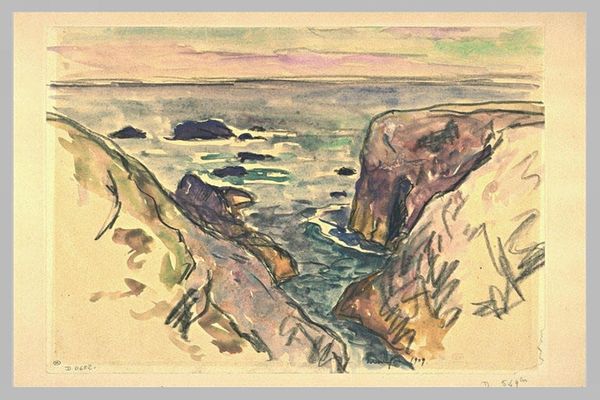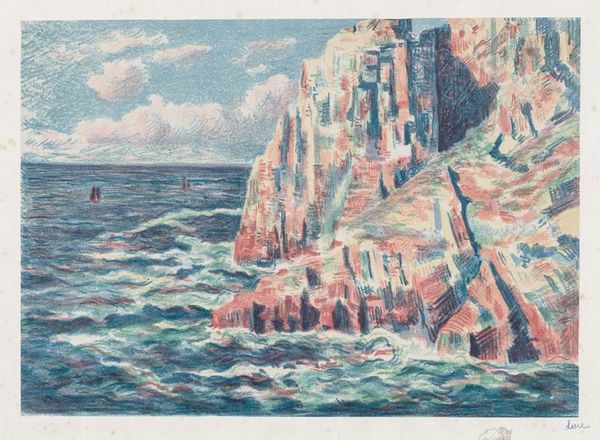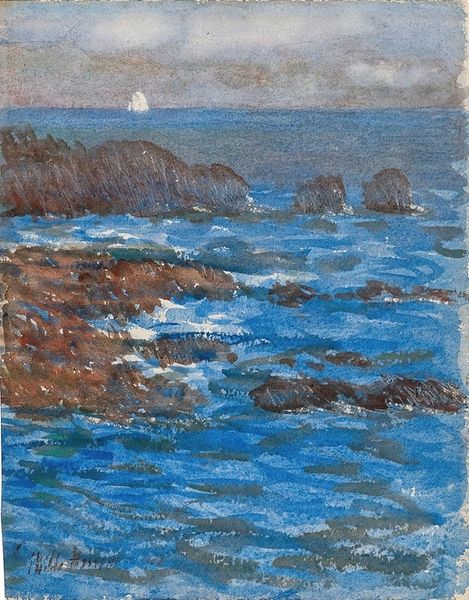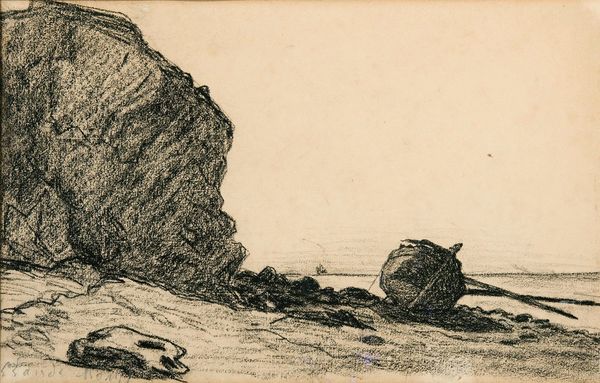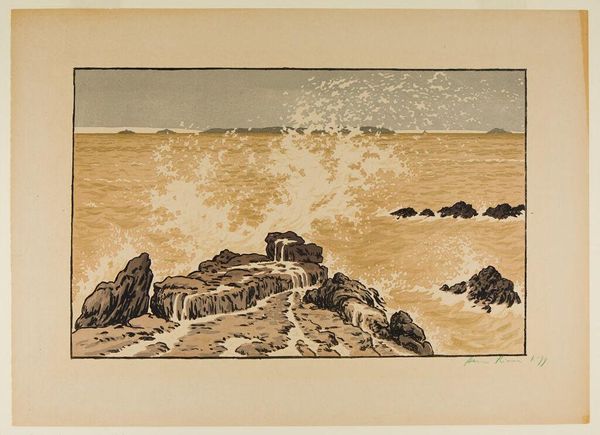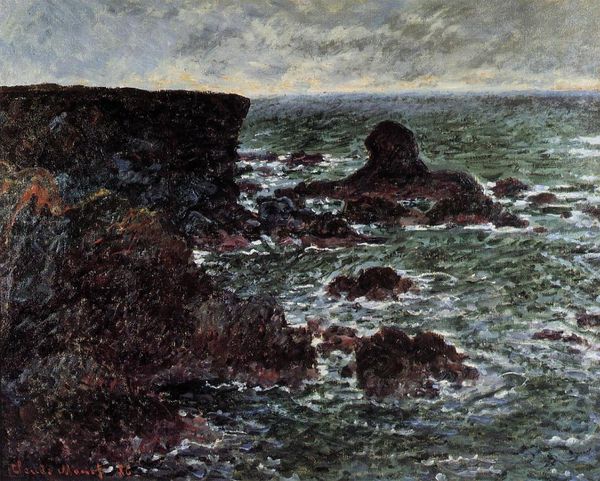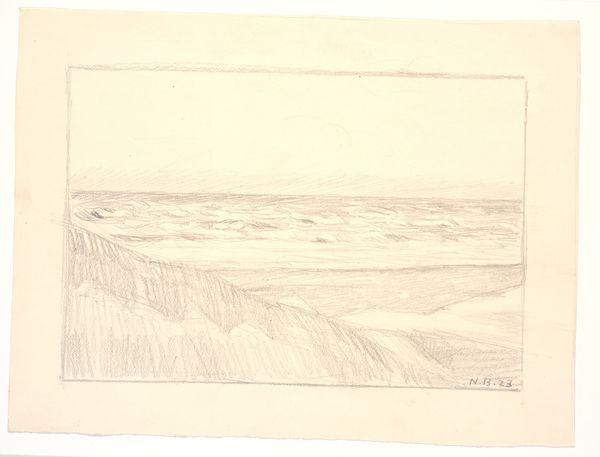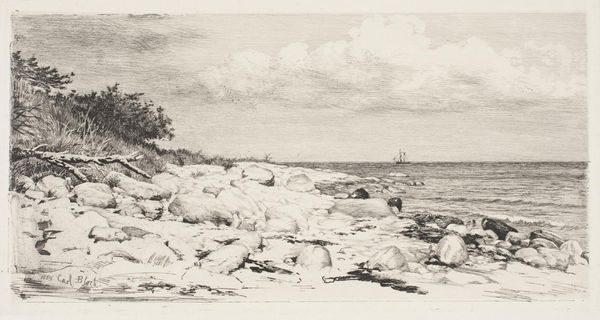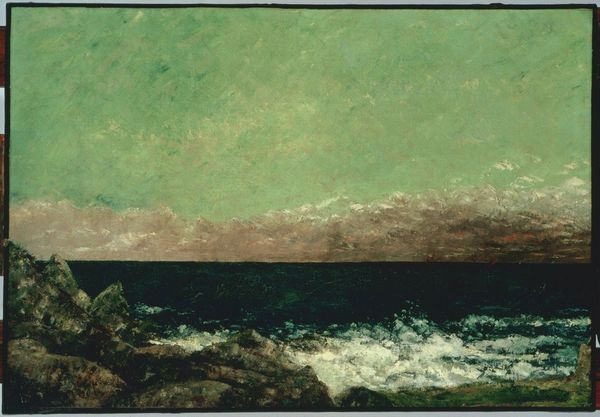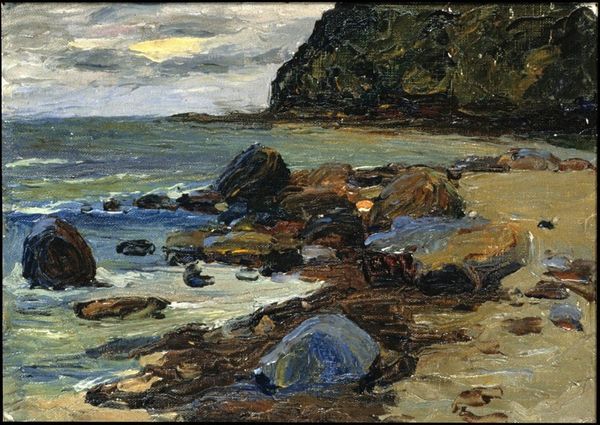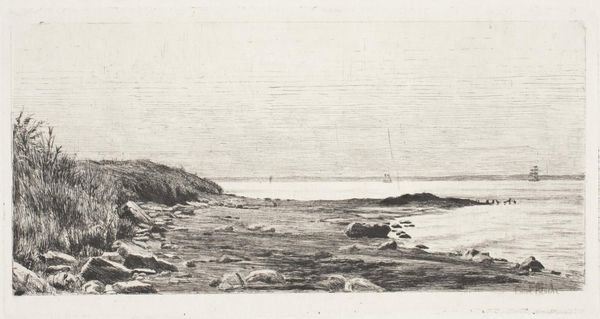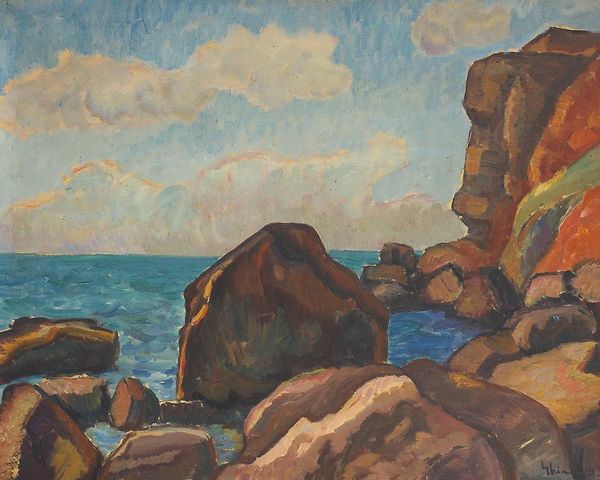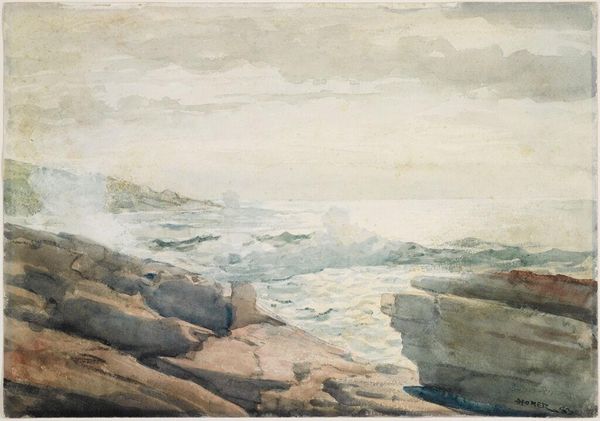
Copyright: Public domain
Curator: This watercolor painting is "Cliffs of the Wild Coast," crafted in 1910 by Maxime Maufra. It appears to have been rendered en plein air, a favored technique among Impressionists like Maufra. What's your immediate impression? Editor: There’s an isolated feeling here, almost melancholy. The stark cliffs against the rough sea, and the solitary figure atop, speak of nature's indifferent power. Curator: I find that intriguing because the composition resonates deeply with maritime symbolism. The cliffs, the rocks, and even the lone figure all take on different meanings. Consider, for example, the cliff – it stands for resilience, protection, but also the boundary between the known and unknown. Editor: Precisely! That boundary resonates, particularly from a post-colonial perspective. The rugged landscape served both as a literal and metaphorical defense, shaping cultural identities in coastal communities against outside forces and maritime incursions. Curator: Absolutely. The Impressionists were focused on capturing the transient moment but they were influenced by deep symbolic tropes, wouldn't you agree? Note the dark watercolors. They don't provide a light, happy atmosphere. There is a certain austerity that reminds me of traditional interpretations of the sea representing the subconscious. Editor: And let's not forget that lone figure—perhaps an overlooked fisherman, perhaps a tourist looking out over land they don't understand. He embodies themes of human vulnerability, existing only as a marker within nature’s massive and unpredictable theater. Curator: He does introduce that introspective note. I also appreciate how the visible brushstrokes animate the water, imbuing it with a vital, living presence. Each wave mirrors the constant flux of human emotion. Editor: Yes, Maufra gives us space for reflecting on larger social power dynamics; his landscape feels less like a serene escape and more like a reminder of the constant tension between humans and their environments. I think of contemporary eco-criticism while considering this work. Curator: I will reflect on those power dynamics and vulnerability now that you bring those aspects into sharper focus for me! Maufra's seemingly straightforward cliffscape actually speaks volumes about our psychological relationship with nature. Editor: It is an evocative painting and thinking about that historical-cultural framework changes everything. Thank you.
Comments
No comments
Be the first to comment and join the conversation on the ultimate creative platform.
